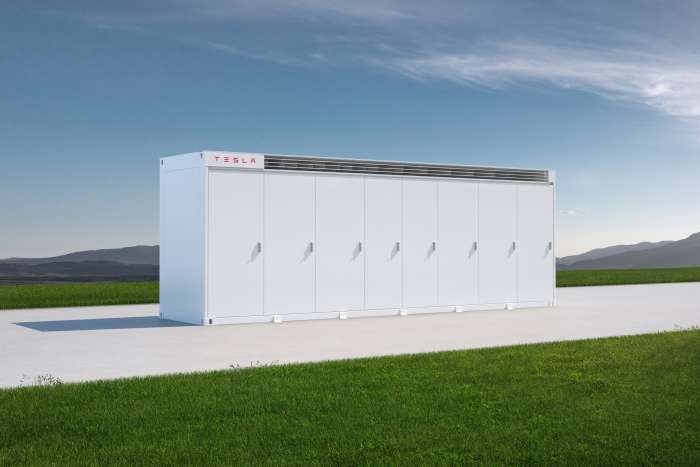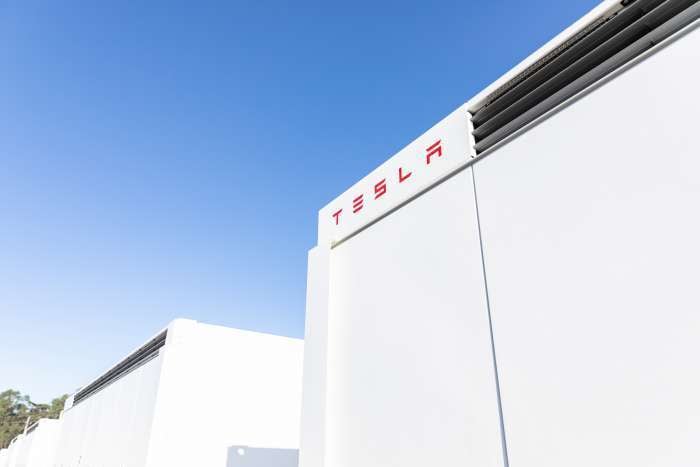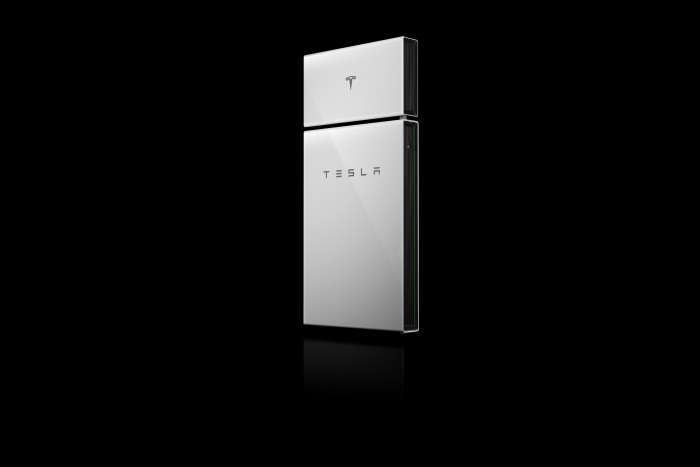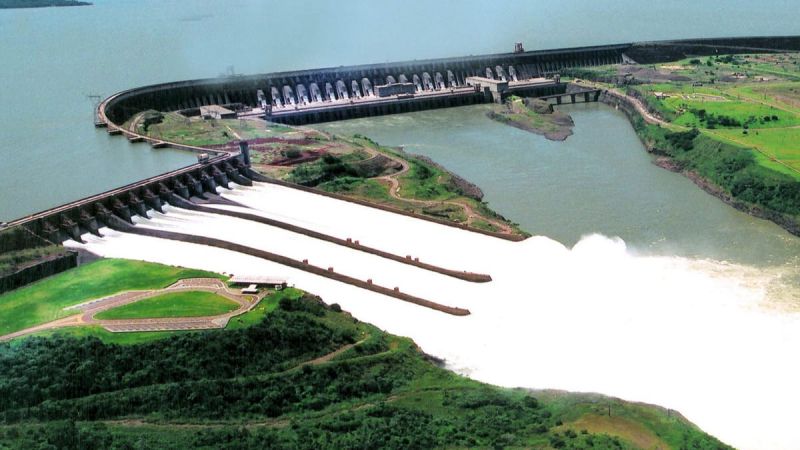The Paraguayan representatives of Itaipu Dam will visit Tesla facilities between next Monday and Wednesday in Palo Alto, California, where they will also present data from the hydroelectric plant. As reported by the binational entity, the visit will include a tour of the energy storage facility located in Ventura/Oxnard, California. Likewise, the Paraguayan delegation will present the history, characteristics, details and numbers of the hydroelectric dam.
4 members of the Board of Directors - Gerardo Blanco, Eduardo Viedma, Luis Morínigo and Félix Sosa - are designated to participate in the meeting with Tesla. Itaipu highlights that, in addition to energy production through hydroelectric power, it has been promoting initiatives in the fields of renewable energy and energy efficiency.
Completed in 1984, Itaipu Dam is a binational undertaking run by Brazil and Paraguay at the border between the two countries, 15 km (9.3 mi) north of the "Friendship Bridge". The project ranges from Foz do Iguaçu, in Brazil, and Ciudad del Este in Paraguay, in the south to Guaíra and Salto del Guairá in the north. The installed generation capacity of the plant is 14 GW, with 20 generating units providing 700 MW each with a hydraulic design head of 118 metres (387 ft). In 2016, the plant employed 3038 workers.

Of the twenty generator units currently installed, ten generate at 50 Hz for Paraguay and ten generate at 60 Hz for Brazil. Since the output capacity of the Paraguayan generators far exceeds the load in Paraguay, most of their production is exported directly to the Brazilian side, from where two 600 kV HVDC lines, each approximately 800 kilometres (500 mi) long, carry the majority of the energy to the São Paulo/Rio de Janeiro region where the terminal equipment converts the power to 60 Hz.
Although its designed peak generating capacity is 14,000 MW, behind the 22,500 MW Three Gorges Dam, the dam formerly held the record for energy production with 101.6 TWh produced in 2016. This record was beaten in 2020, when the Three Gorges Dam produced a new record 111.8 TWh after extensive monsoon rainfall that year. In the period 2010-2019, the Itaipu Dam maintained the highest average annual hydroelectric production in the world averaging 92.7 TWh per year, higher than the 91.9 TWh per year average of the Three Gorges Dam in that period.

Some interesting facts about Itaipu Dam:
The total length of the dam is 7,235 metres (23,737 ft). The crest elevation is 225 metres (738 ft). Itaipu is actually four dams joined together – from the far left, an earth fill dam, a rock fill dam, a concrete buttress main dam, and a concrete wing dam to the right. Electricity is 55% cheaper when made by the Itaipu Dam than the other types of power plants in the area.
Though it is the seventh largest reservoir in size in Brazil, the Itaipu's reservoir has the best relation between electricity production and flooded area. For the 14,000 MW installed power, 1,350 square kilometres (520 sq mi) were flooded. The reservoirs for the hydroelectric power plants of Sobradinho Dam, Tucuruí Dam, Porto Primavera Dam, Balbina Dam, Serra da Mesa Dam and Furnas Dam are all larger than the one for Itaipu, but have a smaller installed generating capacity. The one with the next largest hydroelectric production, Tucuruí, has an installed capacity of 8,000 MW, while flooding 2,430 km2 (938 sq mi) of land.

The Tesla Megapack is a large-scale rechargeable lithium-ion battery stationary energy storage product, intended for use at battery storage power stations, manufactured by Tesla Energy, the clean energy subsidiary of Tesla, Inc. Launched in 2019, each Megapack can store up to 3 megawatt-hours (MWh) of electricity. Each Megapack is a container that is sized slightly under the size of the ISO intermodal container. Designed to be deployed by utility companies, Megapacks can be used to store energy generated by intermittent renewable power sources, such as solar and wind. The energy stored can be used by the grid as required, for example during periods of peak electricity demand. Tesla Energy also offers smaller battery energy storage devices: the Powerwall, intended for home use, and the Powerpack, intended for use by businesses or on smaller power utility projects.
Now, talks between a world leader in electric cars and battery storage like Tesla, and Itaipu, the second biggest hydroelectric dam in the world, are certainly good news for the environment and for the future of green energy.
All images courtesy of Tesla Inc., except Itaipu Dam.
Itaipu Dam Image from Wikipedia.
Jonas de Carvalho - Flickr. CC BY-SA 2.0.
Nico Caballero is the VP of Finance of Cogency Power, specializing in solar energy. He also holds a Diploma in Electric Cars from Delft University of Technology in the Netherlands, and enjoys doing research about Tesla and EV batteries. He can be reached at @NicoTorqueNews on Twitter. Nico covers Tesla and electric vehicle latest happenings at Torque News.











